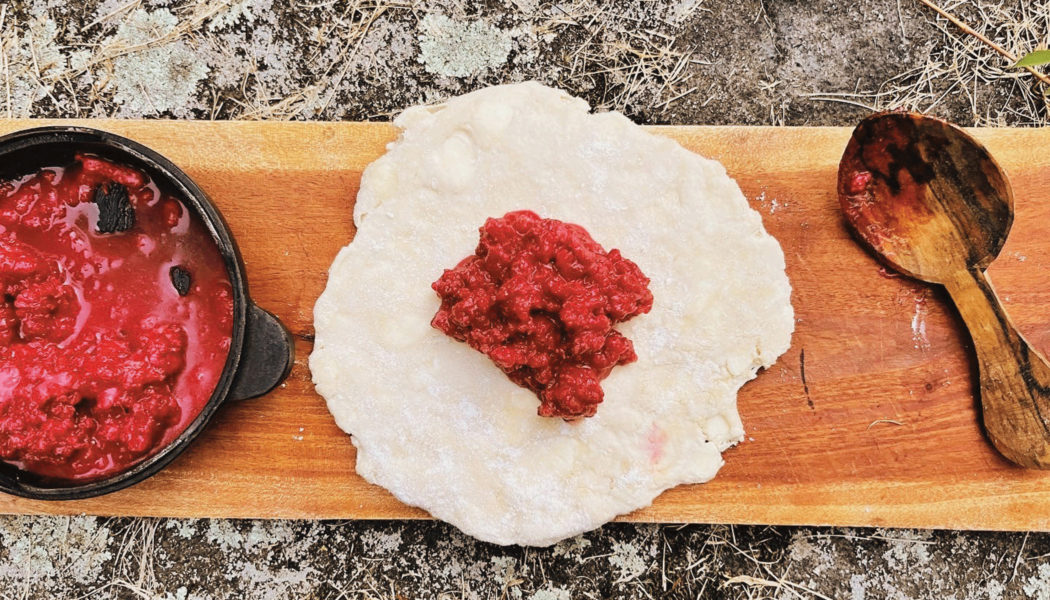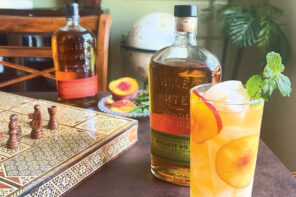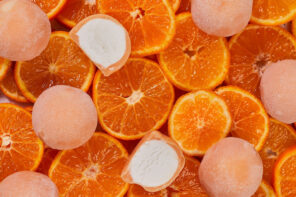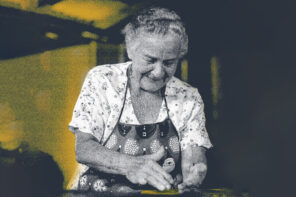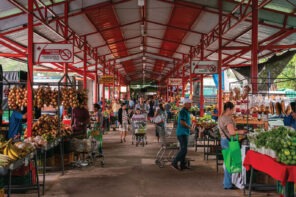By Lex Taylor | @The.North.Feast
It’s a pretty good rule of thumb to not eat anything you find on the ground. Generally. But when you do, it should be while foraging through the woods with a trained professional outdoorsman and chef. Lex Taylor is the man for the job. Whalebone asked Lex to create a few forageable recipes inspired by some of his favorite national parks. He politely accepted and then mentioned we really should have checked with him before we started eating those berries. Good advice. In fact, we’ll let him take over from here. Excuse us.
Notes on Foraging
There is a classic saying that there are old foragers and there are bold foragers, but not old, bold foragers. In all the rewarding ways we enjoy nature, we must never forget to respect it. Foraging is a beautiful way to connect with nature and discover some of the most delicious foods and potent medicines on Earth. But it goes deeper than that. The act of walking through the woods in search of food is perhaps the most ancient skill we possess as a species. And though we may be rusty, historically speaking we are much more at home and in our comfort zone in nature than on a Zoom call. It’s a part of who we are, and partaking in this brings with it a beautiful sense of peace and tranquility. However, it is important to understand that harvesting and ingesting wild plants and mushrooms bears great risks, and you cannot learn to forage from a book or a video. It can only be learned patiently alongside a trained and wise professional.
So don’t try these without supervision, people.
Chaga Tea
Chaga is a black, slow-growing woody fungus that grows primarily on birch trees. There are several species of birch that produce chaga. White birch is the most recognizable. Native to colder, northern climates, its white bark reflects sunlight and keeps the tree from thawing during sunlight hours in the depth of winter. Chaga looks exactly like charred wood, but is a beautiful yellow ochre color inside. It is one of several mushrooms known for its medicinal properties. Many Eastern cultures and Indigenous communities have used it for centuries as part of a healthy lifestyle. It’s an anti-inflammatory and is used for immune system support, reducing cholesterol and blood sugar, as well as countless other healing effects. Many of its medicinal features can be extracted easily through tea, and its taste can be quite enjoyable. The fungus is hard, so I use the back of my axe or smooth river rocks to break it up.
Ingredients
- 1 fist-sized piece of chaga, broken up into marble-sized pieces
- 1 liter of clean, fresh water
- 1 pot to boil water
Directions
- Add pieces of chaga to the water. Bring water to a boil. Allow to simmer until the water turns black and reduces by about ¼. Filter out pieces and set aside. These pieces can be reused about 5-10 times and will actually produce more potent tea with each boil. Allow to cool before drinking.
Fire-Roasted Rainbow Trout with Nettle Pesto
Glacier National Park in Montana is one of the most beautiful natural places on this Earth. And its crystal-clear lakes provide some of the best trout fishing. When I’m heading out on a multi-day adventure, planning my meals saves me lots of time, money, and weight in my pack. My camp kitchen and pantry will depend on my mode of travel, with hiking requiring the most planning and scrutiny due to weight restrictions. Though it’s nice having a grill grate, cast iron pans, and utensils, the only thing truly necessary is a pot for boiling water. A large stainless steel pot with a lid and bail handle can double as both a pan and an oven, and when packed properly can be filled with food and supplies.
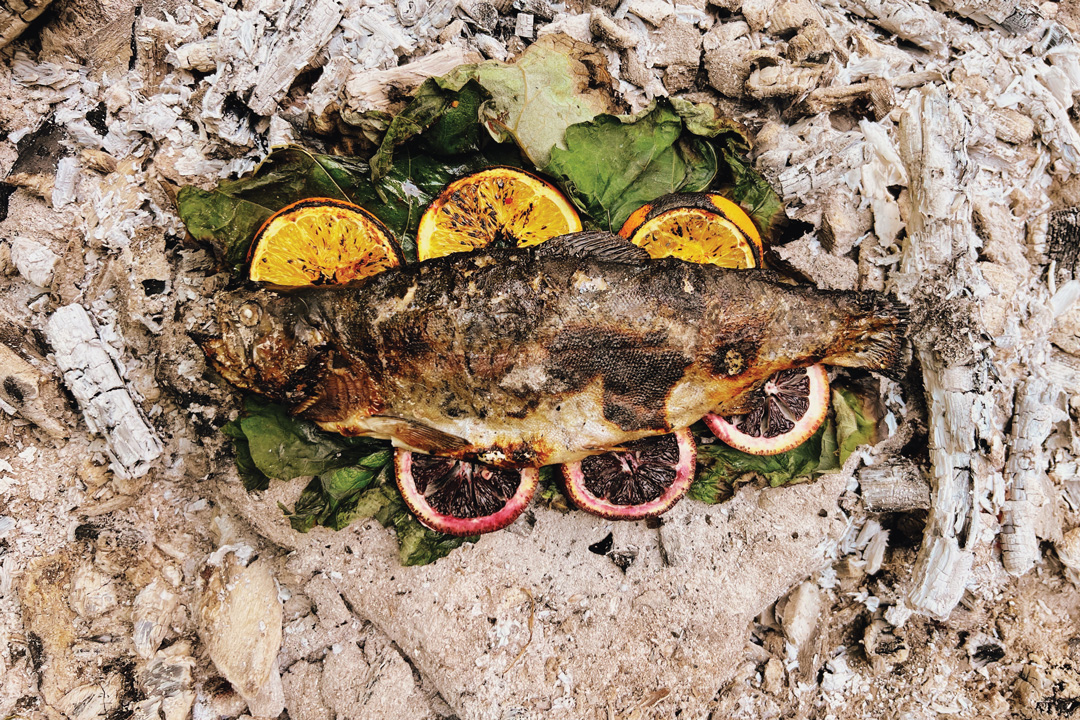
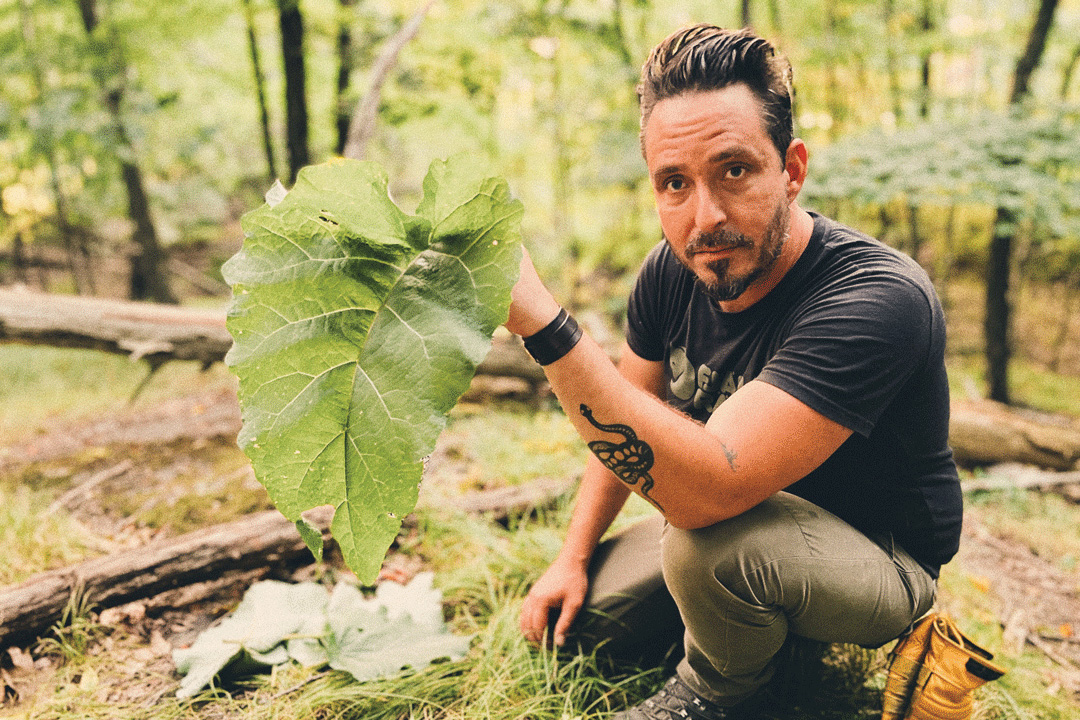
For the Pesto:
Ingredients:
- 4 tomatillos, cut into quarters
- 1 handful of stinging nettle leaves, washed
- ¼ small white onion
- 1 clove garlic
- 1 mild jalapeno
- ½ Tsp kosher salt
- 2 Tbsp olive oil
Directions:
- In a medium skillet over medium-high heat add oil, tomatillos, nettles, onion, and garlic. Sauté for 3-4 minutes until soft. Allow to cool for 5 minutes, then transfer to a blender. Add salt and blend until smooth.
For the Fish:
Ingredients:
Serves 4
- 1 – 2 pounds, cleaned and gutted trout
- 3 – 4 Tbsp nettle pesto
- 5 – 6 large, summer grape leaves or 2 – 3 large burdock leaves for wrapping fish
- 2 feet of butcher’s twine
- 6 orange slices cut pencil thick
Directions:
- Place a flat rock roughly the size of your trout in the middle of your fire pit and build a hardwood fire on top of it. Smooth river stones may contain moisture that can cause them to crack or shatter—don’t use those.
- Make a bed of coals about twice the size of your fish and fan them with leaves or your hat. Place the fish on the coals and cook for about a minute. Remove fish, fan the coals again and lay fish down on its other side. Cook for another minute and remove. (Note: Light, stainless steel BBQ tongs are long enough for working with live fire and good for moving around not only food but burning sticks and coals. I generally bring a set to camp with me but clean, leather work gloves can also be used to handle the fish.)
- Lay fish on a leaf or leaves and add pesto and sliced oranges to both sides. Wrap with remaining leaves and tie with butcher’s twine.
- Brush away the coals from the rock in the middle of the fire and place your fish. Cook for 5 minutes on each side.
- Remove and let cool.
Wildberry Biscuits
Biscuits are a great food for camp for two main reasons. The first is that biscuits provide more food than you have to carry out to camp. All you need to bring with you is the flour mix. Once at camp you can add berries and water from the land. The second is that warm, fresh biscuits are excellent comfort food, especially on a chilly morning, and will warm the body and the soul.
Whenever I camp I like to prepare as many of the foods as possible before I head out. If I know I’ll be eating fish, I’ll make some sauces like the nettle pesto at home and carry out a few ounces in a small jar. Same goes for biscuits. I’ll prepare the dry mix at home and carry it out to camp wrapped in wax paper or a paper bag, as these materials can be burned after use, which is good because I have less waste to carry out and I reduce odors that may attract bears.
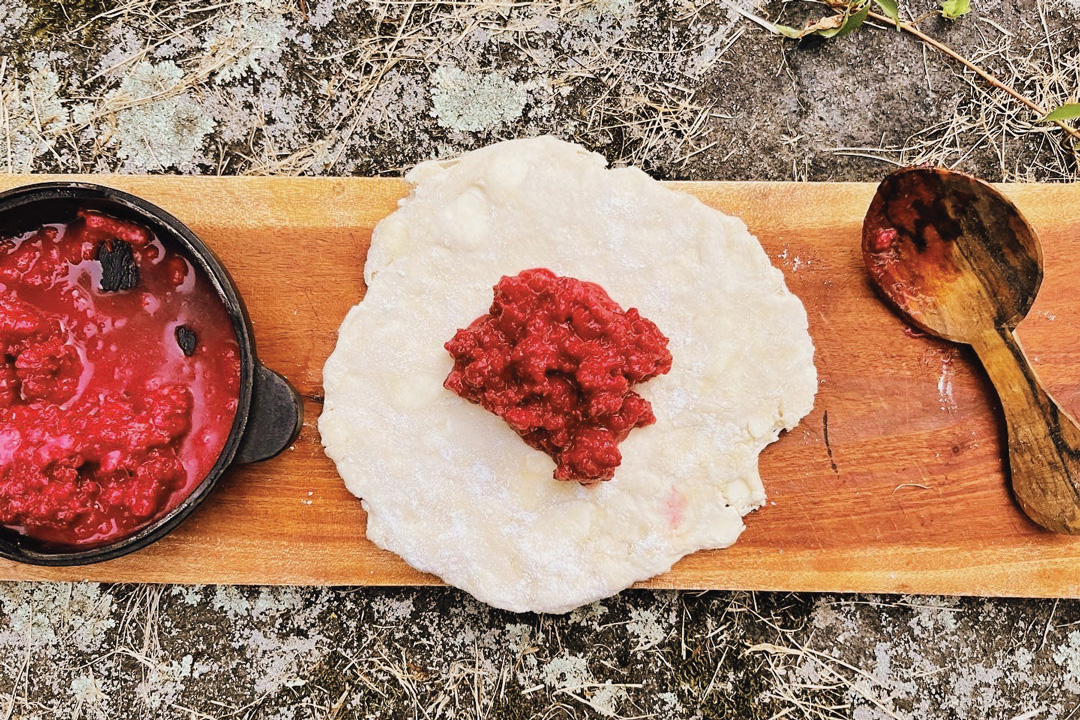
For the biscuits:
Makes 4 biscuits
- 3 cups all-purpose flour
- 3 Tbsp light brown sugar
- 2 Tsp kosher salt
- 2 Tbsp baking powder
- 1 stick unsalted butter
- About 1 ½ cup cold, clean water
For the berry filling:
- 2 cups wild berries, cleaned
- ½ Tsp ground allspice
- 2 Tbsp white, granulated sugar
- 2 Tbsp unsalted butter
Directions
- At home, mix the flour, light brown sugar, salt, and baking powder. Cut the butter into ¼ inch cubes and add to the flour mixture. With clean hands work the butter into the flour until it is spread evenly throughout the mixture. Place in a waxed paper bag or wrap in wax paper.
- At camp, slowly add the water until a semi-sticky dough forms.
- Add the berries, butter, white sugar, and allspice to a small pot or pan and gently cook over low heat for three minutes until the berries begin to break up. Remove from heat and allow to cool.
- Once the berry filling is cool, separate the dough into four equal balls and roll each one out into a circle about six inches in diameter and about pencil thick.
- Add an equal amount of berry filling to center of each disc of dough and carefully lift up the sides around the filling and pinch together at the top. Flip biscuit over so the pinched edges are underneath.
- Place biscuits on hot stones around the edge of the fire or directly into the coals where the temperature is relatively low. Turn every minute and flip occasionally until all sides of the biscuits are golden brown.
- Allow to cool before serving.

